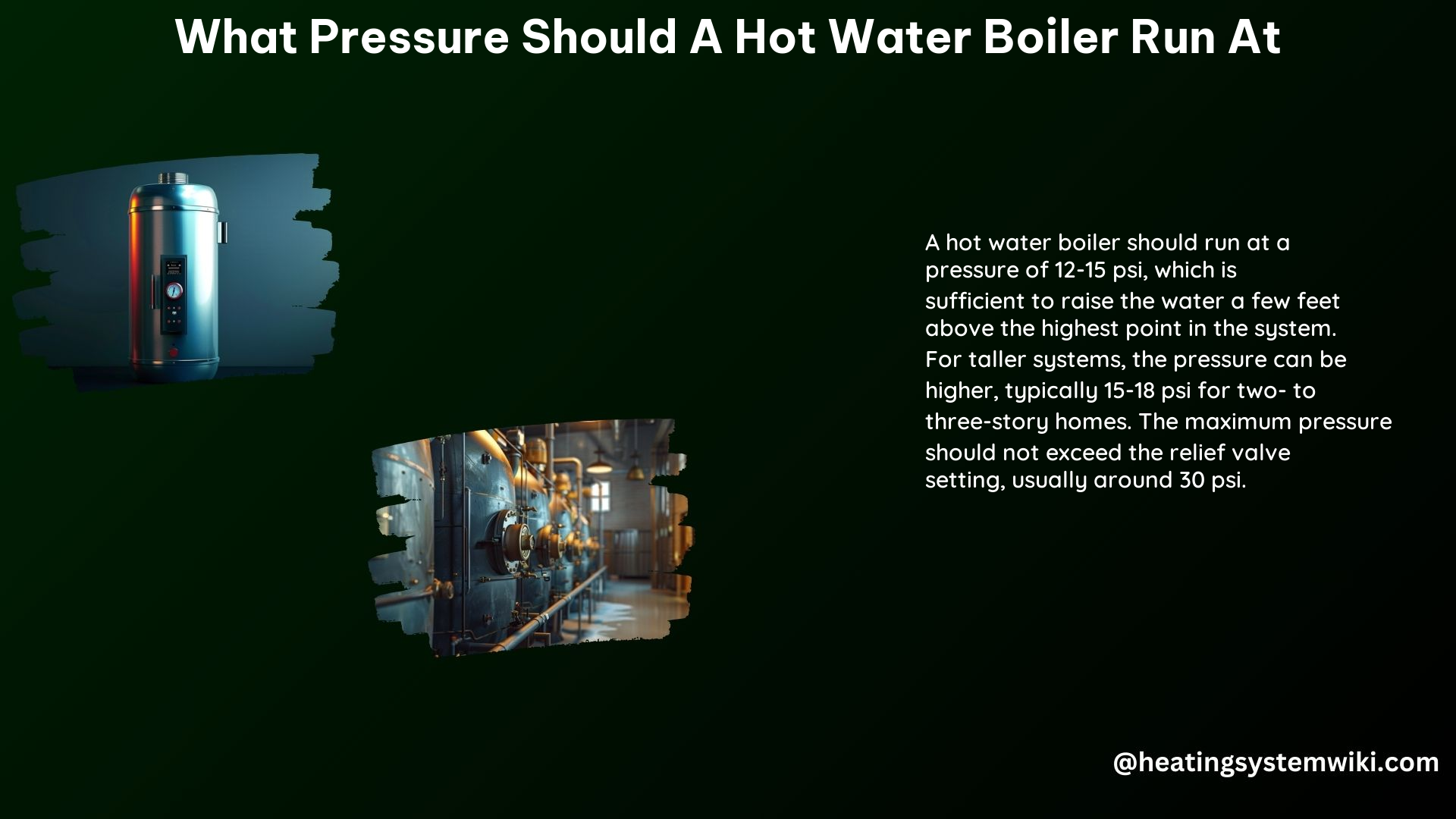The ideal pressure for a hot water boiler typically ranges from 12 to 15 pounds per square inch (PSI). This pressure is sufficient to raise the water a few feet above the top of the highest point in the piping system without causing excessive pressure that could lead to leaks or other issues. Understanding the proper pressure range, factors affecting it, and techniques for adjustment are crucial for maintaining a well-functioning hot water boiler system.
Ideal Pressure Range
Standard Setting
The standard setting for a hot water boiler’s pressure is typically 12 PSI when the system is cold.
Typical Operating Range
The typical operating range for a hot water boiler’s pressure is 12-15 PSI. This range ensures efficient and safe operation of the system.
Maximum Safe Pressure
The maximum safe pressure for a hot water boiler is 30 PSI, which is the point at which the pressure relief valves are triggered to release excess steam and prevent damage to the system.
Factors Affecting Pressure

System Height
The height of the heating system plays a significant role in determining the required pressure. Higher systems, such as two-story or three-story houses, require higher pressures to ensure proper water circulation.
- Two-story House: 15-18 PSI
- Three-story House: 18-25 PSI
Environmental Conditions
Atmospheric and environmental conditions can cause pressure changes in the hot water boiler system. Factors like temperature, humidity, and barometric pressure may necessitate adjustments to maintain the ideal pressure range.
Adjusting Pressure
Valves
Valves, such as the Watts 1156, can be used in the feed line to adjust the pressure of the hot water boiler system. These valves allow for precise control and fine-tuning of the pressure.
Filling Loops
External or internal filling loops can be used to top up or release pressure as needed, ensuring the system maintains the ideal pressure range.
Common Issues
High Pressure
High pressure in a hot water boiler system can lead to leaks, system shutdowns, and seal failures. The pressure relief valves are typically set to trip at 30 PSI to release excess steam and prevent damage.
Low Pressure
Low pressure in a hot water boiler system can indicate the presence of leaks or other issues. In such cases, manual refilling may be required to bring the pressure back up to the ideal 12 PSI.
Technical Specifications
Pressure Gauges
Pressure gauges on hot water boiler systems are typically marked with green (ideal) and red (high/low) zones, providing a visual reference for the proper pressure range.
Pressure Relief Valves
Pressure relief valves are an essential safety feature in hot water boiler systems. These valves are designed to trip at 30 PSI, releasing excess steam and preventing damage to the system.
DIY and Professional Assistance
Self-Adjustment
Homeowners can adjust the pressure of their hot water boiler systems using filling loops and valves. However, it is recommended to consult with professionals if unsure about the process or if the system has experienced high pressures or shutdowns.
Professional Inspection
If a hot water boiler system has experienced high pressures or shutdowns, it is advisable to have a professional inspect and adjust the system to ensure its safe and efficient operation.
By understanding the ideal pressure range, factors affecting it, and techniques for adjustment, homeowners and HVAC professionals can maintain a well-functioning hot water boiler system, ensuring reliable and energy-efficient heating for the home.
References:
– https://terrylove.com/forums/index.php
– https://forum.heatinghelp.com/discussion/164637/boiler-pressure-more-than-20-psi
– https://www.thermodirectinc.com/how-much-pressure-should-my-boiler-have/
– https://heatinghelp.com/systems-help-center/what-is-the-right-pressure-for-a-hot-water-heating-system/
– https://www.edfenergy.com/heating/advice/boiler-pressure-everything-you-need-know
